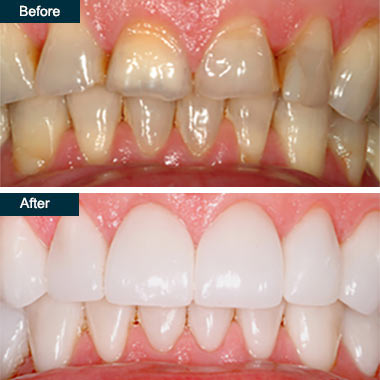A porcelain crown (or cap) is a covering that encases the entire tooth surface restoring it to its original shape and size. A crown protects and strengthens tooth structure that cannot be restored with fillings or other types of restorations.
Although there are several types of crowns, porcelain (tooth colored crown) are the most popular, because they resemble your natural teeth. They are highly durable and will last many years, but like most dental restorations, they may eventually need to be replaced.
Signs you may need dental crowns
- Large fillings prone to fracturing
- Broken cusps
- Excessive wear
- Undesirable appearance
- Root canals
Reasons for dental crowns
- Broken or fractured teeth
- Cosmetic enhancement
- Decayed teeth
- Fractured fillings
- Large fillings
- Tooth has a root canal
Porcelain Crown Procedure
Crown procedures can be done in one appointment. We use a Sirona Galileos 3D X-ray machine and a CEREC porcelain crown making machine. The two pieces work harmoniously to design crowns virtually before an implant is placed. This ensures that the placement of the dental implant is properly placed to make the esthetics of the crown optimal. It also allows the dentist to make a surgical guide for the placement of the implant so that there are no positioning errors which can affect the overall outcome of a surgical or restorative case.
The CEREC technology expounds on past tools by allowing us to use better porcelain materials (zirconia) that are stronger and can be used in other areas of the mouth that traditional porcelain crowns cannot.
The Galileos can also give a 3D depiction of the airway so that we can see if a patient with mild to moderate sleep apnea could benefit from an oral appliance in place of a CPAP machine. We call this Sleep Dentistry and it can be very helpful in aiding the fight against sleep apnea.
You will be given care instructions and encouraged to practice good home care to ensure a long life for your crown.


